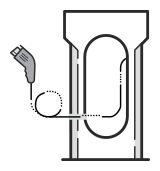Prime Big Deal Days are Oct 10-11! Join Prime Now or you cannot be part of it!
Unlimited Device Coverage with Private Internet Access VPN
Unlimited Device Coverage with Private Internet Access VPN
This post may contain affiliate links, please read my disclosure here
Electric power is changing travel in several ways:
Electric vehicles (EVs)
The rise of EVs has made it possible for people to travel without relying on gasoline. EVs have reduced emissions and are more environmentally friendly.
Charging infrastructure: The growth of charging infrastructure has made it easier for people to charge their EVs while on the go.
Increased range: Advances in battery technology have increased the range of EVs, making it possible for people to travel long distances without stopping and recharging. General Motors recently announced that the all-electric Chevrolet Silverado truck will offer a range of 450 miles on a full charge. That is a longer distance than most gas-powered cars have.
Smart charging: The development of innovative charging systems has made it possible to manage the charging of EVs, reducing strain on the electric grid and making it more efficient.
Electric power is transforming how people travel, making it cleaner, more convenient, and more sustainable.
Road Trips by Electric Car Are Easier than Ever
As of March 2020, there were approximately 25,000 public vehicle-charging stations in the U.S. In 2023, there are now around 130,000 charging stations. That is a growth of 20% in just 3 years.
A couple of years ago, Florida’s governor announced $8.6 million in funding to build EV stations along state highways, and starting this year, General Motors and EVgo, the nation’s largest public fast-charging network, are set to add 700 fast chargers in states including California, Texas, Florida, and Illinois. As of October 2023, Volkswagen’s Electrify America initiative has installed 840 outposts in addition to its recently completed EV-charging route from Washington, D.C., to Los Angeles.
There are a lot of discussions regarding the EV range, with some media outlets calling it range anxiety. As with any new technology, there will always be anxiety about using and adopting it over something that we are used to. Interestingly, when looking at the actual numbers, electric vehicle ranger matches or sometimes exceeds that of gas-powered. For instance, Tesla has a range of 330, equivalent to many gas-powered vehicles that do about 20 mpg.
On our recent trip to Canada (Montreal and Quebec), we rented a Tesla Y. This was the first time we were driving a Tesla, and it was a great experience. We picked it up in Montreal, drove to Quebec with several stops on the way, and then took another scenic drive on the way back with many detours.
During the entire trip, we only needed to charge twice. And that was an experience on its own. When charging the gas car, you need to watch the pump to see that it is filling up and how much the charging update was inside the car and in the app. We could watch videos and play games on the large screen while waiting for the charge.
The driving experience is also different. The car does so many little things for you during the drive that the drive feels a lot more comfortable and less strenuous. The supped-up cruise control that adjusts speed based on traffic in front and lane positioning is great.
The other major difference in driving an electric car versus a gas-powered one is regenerative braking. You do not need to use two paddles to drive and just one. While in Tesla, you can adjust that mode to mimic what you're used to. I left it on the new mode, and it was quite a new experience to drive one paddle only.
Plug-in Electric Vehicle Charging
E-bikes
 Via Recurrentauto.com: Coal Powered Electric Cars? Still Cleaner
Via Recurrentauto.com: Coal Powered Electric Cars? Still Cleaner
Related articles:
All The Electric Vehicle Terms and Acronyms Explained
Tesla starts deploying Starlink satellite internet systems at Supercharger stations
Elon Musk Wants SpaceX to Reach Mars Using Carbon Capture. Here's How It Could Work
The History Of Electric Vehicles Is Older Than You Think
Get a reliable VPN for computer and phone for travel and at home
Explore the world one country at a time with this fun and educational subscription box for kids!
Airline Approved Carry On Luggage on amazon
Shop All-new Kindle Travel Gear
Sound-off: What do you think? Let us know below
Charger Fast Facts
| Charging Options | Level 1 (120V)  | Level 2 (240V)  | Direct-current (DC) Fast Charging  |
| What does the charge port on the vehicle look like? |  |  |  |
How fast do they charge? | About 5 miles per 1 hour of charging* | About 25 miles per 1 hour of charging* | ~100 – 200+ miles per 30 minutes of charging† |
Where can I find them? |
|
|
|
EV charger images are courtesy of Con Edison
E-bikes
In October, the Department of the Interior finalized orders to allow e-bikes everywhere in the National Park System that traditional bikes are permitted. The decision is controversial among purists, but it could get more people out of their cars and into these outdoor landscapes.
The e-bikes made it easy for riders to take on hills and valleys. By clicking up the pedal assist, the bicyclist would get a boost that makes the climb as easy as riding on level ground. The other option is to let the onboard electric motor do a little more of the work to give your legs a break.
You are not just along for the ride, but you are able to enjoy the ride more and go further with less effort. Pedaling would still be very much part of the experience, although unlike with a regular bike, you have the option to choose whether you want a little or a lot of help along the way.
Electric Planes
While the electric planes are still in the development stages, with a few companies testing out their prototypes in the air. As most technology advances, this type of plane and travel is coming soon. Just like Tesla figured it out with cars to make electric airplanes more mainstream, the same will happen with airplanes. Once one company builds one at scale and shows that it can be done, there will be a push to get the EP up in the air.
Environmental Benefits:
One of the most significant advantages of electric power in travel is its positive impact on the environment. EVs produce zero tailpipe emissions, meaning they don't release harmful pollutants such as carbon dioxide (CO2) and nitrogen oxides (NOx) into the atmosphere. By reducing greenhouse gas emissions, electric power plays a crucial role in combating climate change and improving air quality.
There have been quite a few memes online about how EVs are actually powered by coal plants. They are calling out people by saying that electric vehicles are green, yet you don't realize that they are powered by coal factories that emit a whole lot of CO2 into the air. While it's true that we are yet to figure out how to generate electricity using renewable energy instead of coal or similar, what they forget to admit in those images is that if the same meme was done with a gas-powered car, a steaming coal plant would transform the energy into a build of conventional gasoline cars, which also emits CO2, instead, with that coal plant providing power to the electric car, the CO2 emissions end at that plant.
 Via Recurrentauto.com: Coal Powered Electric Cars? Still Cleaner
Via Recurrentauto.com: Coal Powered Electric Cars? Still CleanerCharging Infrastructure:
An extensive charging infrastructure is being developed to support the widespread adoption of electric power. Charging stations can be found in various locations, including public areas, workplaces, and residential buildings. With the availability of charging infrastructure, EV owners can conveniently recharge their vehicles and overcome concerns about range anxiety.
Evolving Battery Technology:
Central to the success of electric power in transportation is the continuous development of battery technology. Modern lithium-ion batteries, the most commonly used type in EVs, offer high energy density, enabling longer driving ranges and faster charging times. Ongoing research and development are further improving battery technology, promising even more significant advancements in the near future.
Cost Savings:
While the upfront cost of an electric vehicle may be higher than a conventional car, electric power offers long-term cost savings. Electric vehicles have lower operating costs as electricity prices are generally lower than gasoline or diesel prices. Additionally, EVs require less maintenance since they have fewer moving parts and don't need oil changes or other engine-related services.
Electric power is changing the way we travel by providing a cleaner, more efficient, and cost-effective alternative to traditional fossil fuels. With the widespread adoption of electric vehicles (EVs), people are now able to travel long distances with a single charge, reducing their dependence on gasoline and diesel. Charging infrastructure is also rapidly expanding, making it easier for EV owners to recharge their vehicles on the go. Furthermore, the development of autonomous electric vehicles (AEVs) promises to revolutionize the way we travel, reducing the need for human drivers and making it possible for people to travel safely and comfortably in self-driving cars. As a result, electric power is likely to play an increasingly important role in shaping the future of transportation.
Related articles:
All The Electric Vehicle Terms and Acronyms Explained
Tesla starts deploying Starlink satellite internet systems at Supercharger stations
Elon Musk Wants SpaceX to Reach Mars Using Carbon Capture. Here's How It Could Work
The History Of Electric Vehicles Is Older Than You Think
Get a reliable VPN for computer and phone for travel and at home
Explore the world one country at a time with this fun and educational subscription box for kids!
Airline Approved Carry On Luggage on amazon
Shop All-new Kindle Travel Gear
Sound-off: What do you think? Let us know below
If you found this page helpful in your gadget search, please recommend and follow us:






Sign up for free blog updates
Sign up for free blog updates



No comments:
Post a Comment